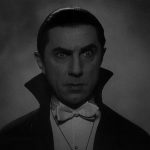 |
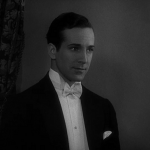 |
 |
| Count Dracula … Bela Lugosi |
Jonathan Harker … David Manners |
Mina Seward … Helen Chandler |
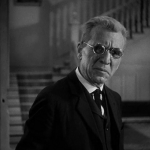 |
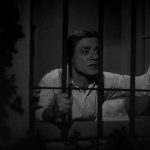 |
 |
| Dr. Van Helsing … Edward Van Sloan |
Renfield … Dwight Frye |
Lucy … Frances Dade |
Proof That It’s Pre-Code
- There’s this crazy theory going around that there’s a sexual subtext to vampires. Have you heard such insanity?
- Oh, and brutal murders. A lot of brutal murders.
Dracula: Standing Around A House, Quite Worried
“Listen to them– the children of the night! What music they make!”
I’m sure you’ve picked up on the basics of vampire lore from one place or another. They’re undead. Sleep during the day, haunt by night. Sucks blood from the neck. Lives forever. Can transform into wolves and bats. Controls people’s wills. Not fond of wolf bane or sunlight. And usually in possession of an insatiable need to stare intently.
A lot of that comes from Bram Stroker’s original novel Dracula from 1898. Some more pieces came from the 1922 silent classic Nosferatu. And then, yes, some even came from today’s movie, Dracula, one of those movies that has such a legendary reputation that I always feel bad when pointing out how undeniably goofy the whole thing is.
Our film opens in the back roads of Transylvania. The leiderhosen clad townsfolk cross themselves and hide as night falls; their warnings to real estate agent Renfield are met with chuckles as he sees no reason to buy their ancient superstitions.
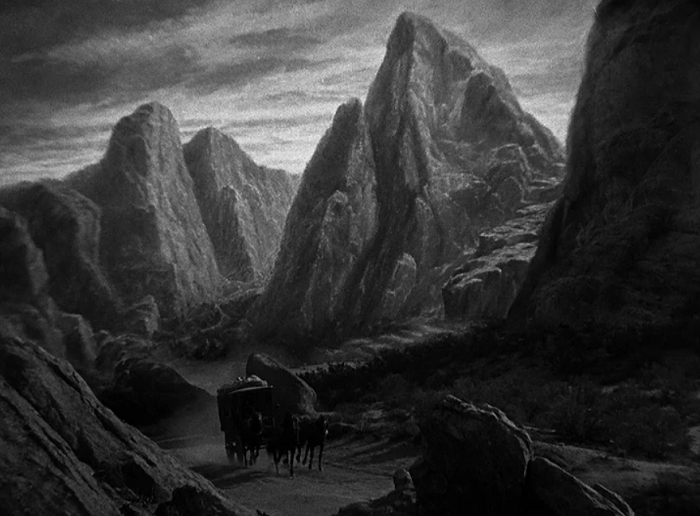
“Haunted? Mysterious? Please.”
Approaching the castle of Dracula, he learns otherwise. His carriage is missing a driver and shepherded by a bat. The lord of the manor arrives and can hardly string a sentence together without mentioning blood. And how messed up is Dracula’s expansive mansion? Possums, spiders, and even armadillos run around the place. It’s an eclectic, ugly place with spider webs that span the great hall and catacombs that seem to stretch on forever.
Refield is nothing if not persistent, though, and despite the red flags popping up– “Dracula licks his lip when I get a papercut? Nothing weird about that!”– and its not long before carefree and mannered Renfield has become toady Renfield, who likes to eat small insects and say “Master!” quite a bit.
He’s become a pawn in Dracula’s game. Since the Count has become so well known in Transylvania, he’s planned out a change in location to London. Now situated in an abandoned abbey, he quickly insinuates himself with the rich and the famous and kills a few of the dregs while he’s at it. Not satisfied with merely beggar women, Dracula soon moves onto the dainty daughter’s of the city’s rich and prosperous, setting up a showdown between himself, the thoroughly bland Jonathan Harker, and the clever Dr. Van Helsing who knows a thing or two about killing vampires.
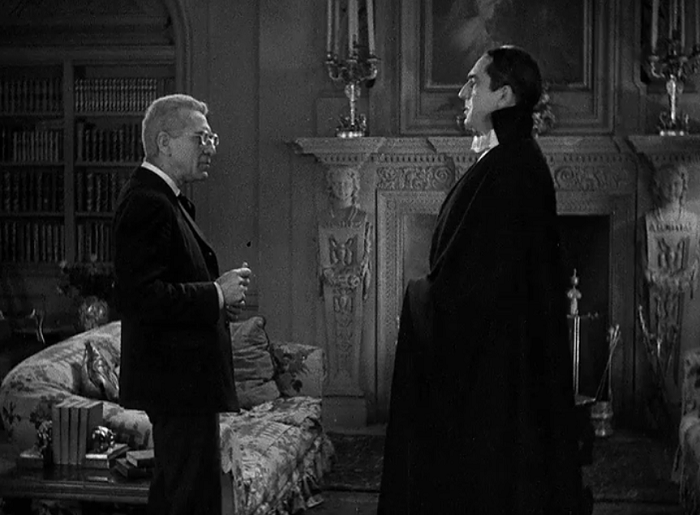
“Dance battle. You and me, bloodsucker.”
That last bit, where I attempt to sum up a portion of the movie in a sentence so that I can continue my review, I usually try to limit to the last ten minutes of the movie. Here, it’s the last 45, for the simple fact that nearly all of it is spent standing around Dr. Seward’s sanitarium. Renfield keeps escaping and gadding about, Jonathan continues to refuse to believe in any of this nonsense, Mina resists the temptations of the Count (with much failure) and Van Helsing keeps explaining vampires again and again and again.
The film’s got atmosphere, though it’s sporadic. When it shines, though, isn’t just in the gothic castle, but in Renfield’s desperation to eat a spider and Mina’s manipulative attempts to get Jonathan’s guard down. More often, though, it’s well lit interiors and surprisingly well lit exteriors too, with people just casually chatting back and forth about how weird things have been the last few days. It takes what should be a paranoid-plagued siege by a supernatural enemy and makes it a fairly pedestrian tea party that’s patiently waiting for one late guest.
The basic horror behind Count Dracula and his vampire brethren come from how they violates the normal bounds of human intimacy. Considered in the Victorian Era from where the novel originated or even with the 1930s take on public displays of affection and sexual relations, you can see why vampires held such a nasty fascination. He has no moral boundaries, for men or women, and that bite and cold embrace mark his victims as those who’ve transgressed society and become the mysterious, sinister other.

“Uh oh, he passed out! Time for vampire CPR!”
Bela Lugosi is a cinch to embody this. His rigid, theatrical manner allows him to devour scenery as easily as Dracula devours beautiful young men and women. Lugosi knew that Dracula was a horrifying beast who spent his waking hours desperately trying to fit in with human society, his every movement measured to give the appearance of nobility and charm. Whenever that facade breaks, that’s when Dracula is at his weakest.
The Count’s fatal flaw is precisely that he is so meticulous and mannered to the extreme. His role in the story is that of the aristocracy personified– untouchable, pleasant, always cordial, and preying on those weaker than him with a mixture of delight and erotic satisfaction. But the moment he is threatened, he unleashes a blind but impotent fury. He is much more comfortable planning and chipping down his enemy’s wills one piece at a time. When open conflict arises, he finds himself outmatched. That is where Van Helsing finds his strength: he may not have the many powers or long term thinking that the Count makes use of, but he has the benefit of being able to improvise.
The other actor who leaves a series impression is Dwight Frye as the raving mad Renfield. Constantly escaping, he has several long monologues portending doom and gloom that are effective though demonstrate another weakness of the film: lots of telling, only a little bit of showing. Since the film was based on the Broadway adaptation of Dracula rather than the source novel, we’re given opulent monologues and a lot of stagey, set bound moments. Frye makes the most of this, almost breaking the fourth wall as he describes the painful truth of being Dracula’s lackey.
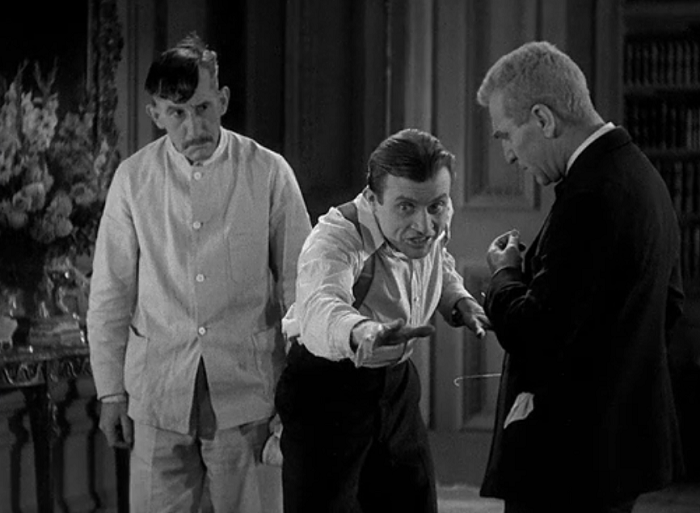
I like to think he’s singing “Grease Lightning” here.
The rest of the main cast doesn’t have any grandiose posing to fall back on and look a bit lost. Poor David Manners– this is his most popular role and easily his worst. See him in Man Wanted or The Miracle Woman and you can see the man has some natural talent and excellent chops. Here he’s saddled with being the ultimate dimwit– both the guy who knows nothing about vampires and the poor sap whose love blinds him to the danger that is lurking a few feet away.
Director Todd Browning was famous for making a number of films with Lon Chaney during the silent era, and unfortunately demonstrates little craft in anything besides long silent takes. A few moments– like the vampiric Mina’s head slowly sinking out of frame as she prepares to snack on Jonathan– demonstrate knowing what to show and what’s better to imply. However, the many implications here lack much verve– we can picture it, but even our imaginations can’t spice up the material.
For the uninitiated, Dracula is, unfortunately, one of my M.T.G.O.M.A.B.N.: Movies That Give Old Movies A Bad Name. (Catchy acronym, right?) It is slow, tedious, and repetitive. Only a few of these attributes can be blamed on being an early talkie– plenty of 1931 pictures could handle being stylish and moving at a good clip. Background music was still a rarity then, sure, but that didn’t preclude sound design as much as this movie would seem to indicate.
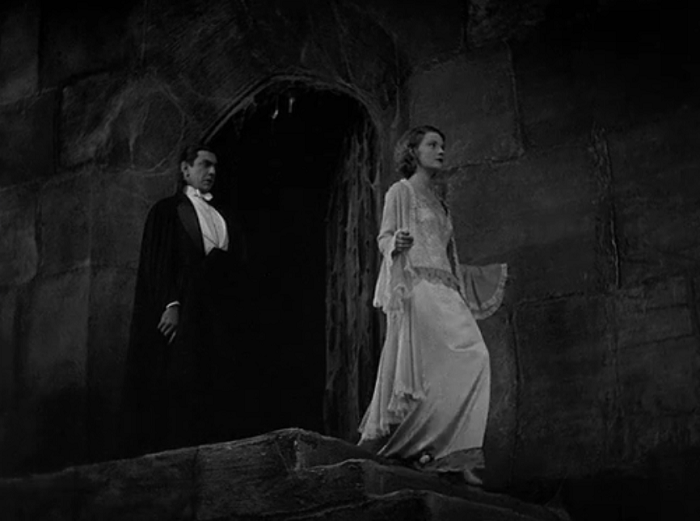
A visual representation of what my review is attempting to do to this movie.
If you’re going to catch this movie, I recommend going to a revival showing at a nearby movie theater. I think an audience and darkness are essential to its mystique, something that a living room could quickly destroy. Unfortunately Dracula, while undoubtedly an important horror movie, is ultimately a tale of style over substance– and there’s not a whole lot style to spare at that.
Gallery
Here are some extra screenshots I took. Click on any picture to enlarge!
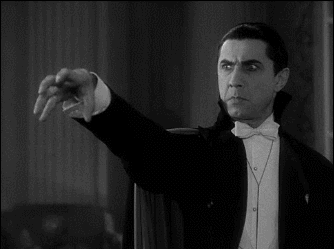

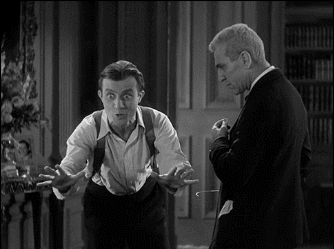
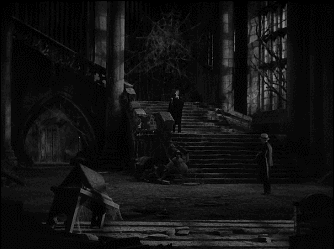
Trivia & Links
- Legendary film critic Roger Ebert inducted this one among his Great Movie series. His wrap up of the article is beautifully succinct and well written, and reminds me just how much I miss the guy:
Is the 1931 “Dracula” still a terrifying film, or has it become a period piece? The “most chilling, genuinely frightening film ever made,” vows the reference series Cinebooks. Perhaps that was true in 1931, but today I think the movie is interesting mostly for technical reasons–for the stylized performances, the photography, the sets. There is a moment, though, when Lugosi draws close to the sleeping Lucy, and all of the elements of the material draw together. We consider the dreadful trade-off: immortality, but as a vampire. From our point of view, Dracula is committing an unspeakable crime. From his, offering an unspeakable gift.
- James Bernadelli at ReelViews feels pretty similarly about the movie as I do. He runs down the ‘before’ and ‘after’ for the films stars and directors. Since we all know where Lugosi went after the movie (rapidly downhill), here’s him talking about Frye’s performance:
If anyone other than Lugosi is remembered for his work in Dracula, it’s likely to be Dwight Frye, whose enjoyably loopy performance as the insane Renfield caused him to be typecast as effectively as Lugosi. Being a skilled Broadway actor didn’t help Frye when he arrived in Hollywood – after appearing as Renfield in Dracula and the hunchback Fritz in Frankenstein, his film career was mapped out. Over the next decade, he would appear in such titles as The Vampire Bat, Bride of Frankenstein, Son of Frankenstein, The Ghost of Frankenstein, and Frankenstein Meets the Wolf Man (the latter two once again with Lugosi).
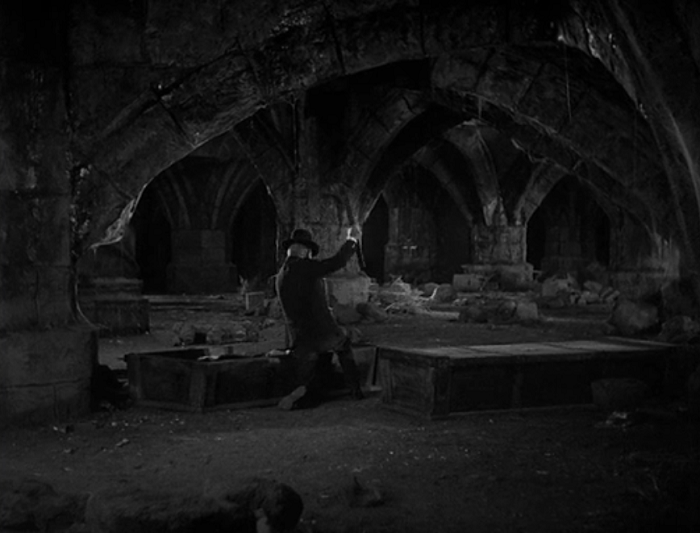
Goodbye folks!
- Moria has a run down near the bottom of the many Dracula films that followed, with links to their reviews of this films two sequels– Dracula’s Daughter (1936) and Son of Dracula (1943).
- There’s a lot of trivia about this movie because it’s so famous. So I’m just going to be a lazy bastard and point you to the IMDB Trivia page today.
- Lugosi would play many more vampires and monsters in his career, but he would only return to Dracula once– in Abbott and Costello Meet Frankenstein (1948).
Awards, Accolades & Availability
- Part of the Universal Horror Series.
- This film is available on Amazon via streaming, DVD, and blu-ray, and can be rented from Classicflix on DVD and blu-ray.
 |
Comment below or join our email subscription list on the sidebar!Home | All of Our Reviews | What is Pre-Code? About the Site | Follow @PreCodeDotCom |


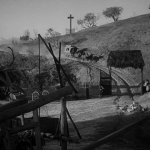
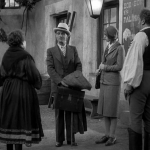
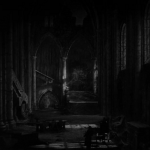
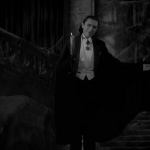
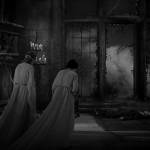
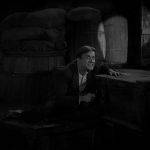
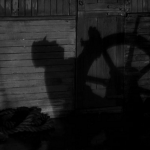
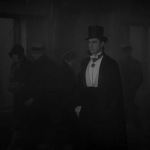
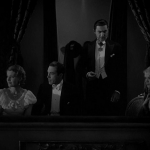
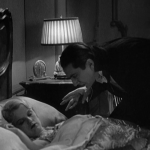
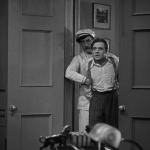
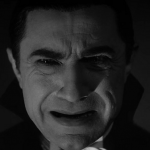
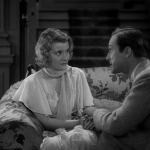
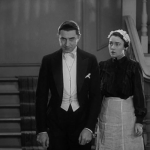
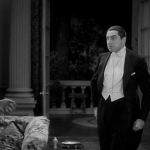
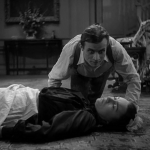
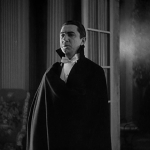


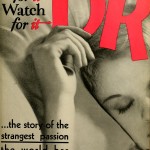
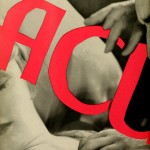
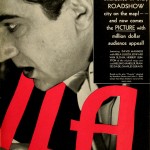
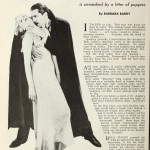



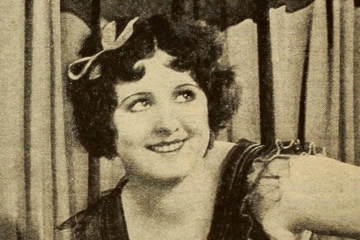
10 Comments
brianpaige · October 29, 2013 at 3:27 pm
I can’t bring myself to agree here. This was THE movie that really got me into old movies. This along with Animal Crackers and the original Scarface. I bet I’ve seen this 100 times, though I must admit the Spanish version is a bit more fluid and better directed. They just needed to get Lugosi a Hungarian to Spanish dictionary.
Danny · October 29, 2013 at 9:25 pm
I totally understand. This was one of my earliest encounters with classic movies too… though I went on to love classic movies more in spite of it than anything. I’ve heard good things about Spanish Dracula, but I still need to track it down. Like I said, I can understand why people like this movie… I’m just definitely not one of ’em!
justjack · October 29, 2013 at 4:40 pm
I’m relieved, Danny, that you are indifferent to Dracula. I feel quite the same about it–iconic title, career-making role, and the creation of a mythic movie character. And yet, the movie itself is not all that compelling. Dracula puts me in mind of Little Caesar, what with the star turn by Edward G. Robinson. Great lead part, but on the whole a creaky film. I wouldn’t say I disliked it, but I can’t fully embrace it either.
Danny · October 29, 2013 at 9:44 pm
I think both suffer from directors who weren’t sure of themselves in the early talkies– I haven’t seen Caesar in a while though, so I could be talking out of my ass. Browning was apparently quite unpleasant to work with on the set of Dracula (and supposedly mostly drunk as well) and the lack of finesse outside of a few atmospheric moments feels pretty glaring when you know this. I think all the elements for a great Dracula are here, but the enterprise is just sunk on a technical end and can’t recover.
Rick · October 29, 2013 at 7:22 pm
While I can appreciate its historical significance, it is frightfully slow and the climax is very anticlimactic. Frankly, the 1958 Hammer DRACULA (aka HORROR OF DRACULA) is superior in every way. Still, it was the first vampire movie I saw and the Universal monsters are still like old friends–even if some of them are old, slow friends.
Danny · October 29, 2013 at 9:48 pm
The climax of this isn’t anticlimactic, it’s just laughable. Considering how much build up there was, I can’t imagine anyone reacting to it without feeling incredulous– it’s just bad plotting altogether. I’d say most of the other Universal Horror pictures hold up better than this– save for The Mummy, but that’s a fight for another day.
Felix Gonzalez, Jr. · October 31, 2013 at 10:35 pm
Nice post. I have to say this pretty much sums up what I have long thought about “Dracula” for many years and still do, for the most part. But on my most recent viewing, I found myself really drawn in by Renfield and Dwight Frye’s performance, and it’s actually a more interesting movie if you think of Renfield as the tragic hero of the whole thing. Both Frye and Lugosi are very theatrical, but their mannerisms are a relief from the wooden performances by just about everyone else (I totally agree about David Manners being better in the two films you mentioned). Frye really uses the theatricality to his advantage, and in a film that relies so heavily on verbal description rather than explicit visuals, he is the only actor who really makes us “see” what he is describing.
As for your last comment about “The Mummy,” I find that rather interesting because “The Mummy” is basically a complete rehash of “Dracula” transposed to Egypt, complete with the same opening music and Manners reprising his role as the useless male lead. Between the two, I vote for “The Mummy” being the better film, but it’s no masterpiece either.
Danny · November 1, 2013 at 12:00 pm
Very well put. Outside of Lugosi’s bombastic eyes, Frye obviously has the best time with the material, and I agree he’s almost a tragic hero. If the whole movie didn’t trip over itself at the end, maybe we could have gotten more out of it.
And it’ll be a while before I hit The Mummy, but I watched it (and its many sequels) last year and if memory serves, it makes Dracula look like a Michael Bay movie.
John · November 26, 2016 at 10:56 pm
Just a point about the Dracula movie. Many scenes were cut from the final production due to Universal’s financial state. That is the reason the movie seems choppy. The actual ending that was allegedly planned was to take place back in Dracula’s castle in Transylvania. All cut out due to production costs. The real sad part is that Universal never made a sequel to this movie. The 1931 Dracula, actually helped pull Universal out of major financial disaster. The 1936 Dracula’s Daughter, is the closest to a sequel but after paying ($4,000) Bela Lugosi to co-star, Universal decided not to go with him and wrote him out of the script. A poor decision.
DMH · January 31, 2022 at 10:44 am
DRACULA is still great fun. The fact it is slow works for it not against it. The vampire’s power is a creeping, gradual death that people only see coming when it’s too late. How different from today where vampires are ferocious, vicious (but attractive) monsters that move at lightning speed. And to those who say the Spanish version is better, phooey. That version is a half hour longer, hopelessly overacted, poorly edited ( see how the showdown between Drac and Van Helsing is chopped up and the tension ruined) and the main character portrayed by Carlos Villerias is a dud.
Comments are closed.